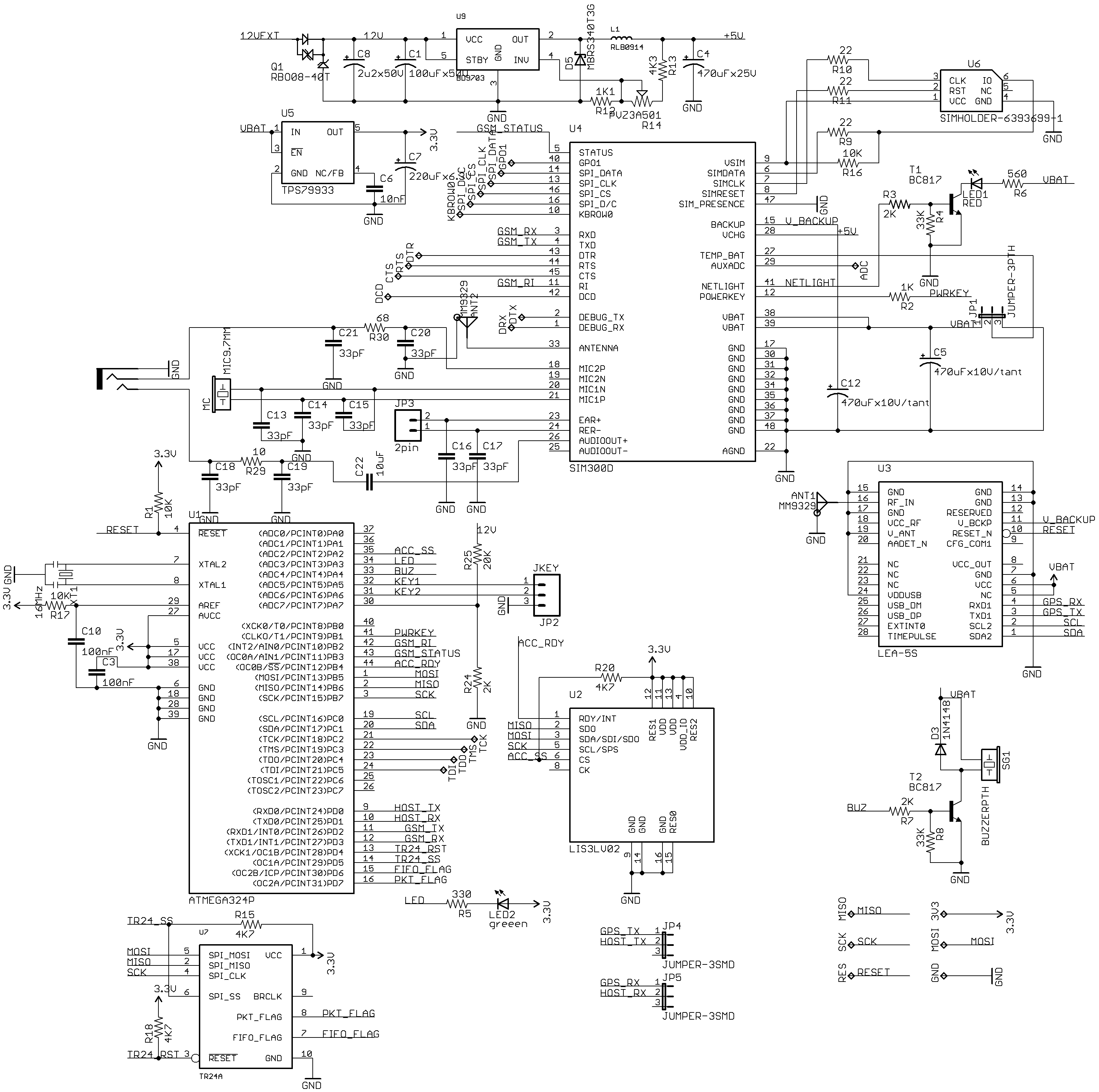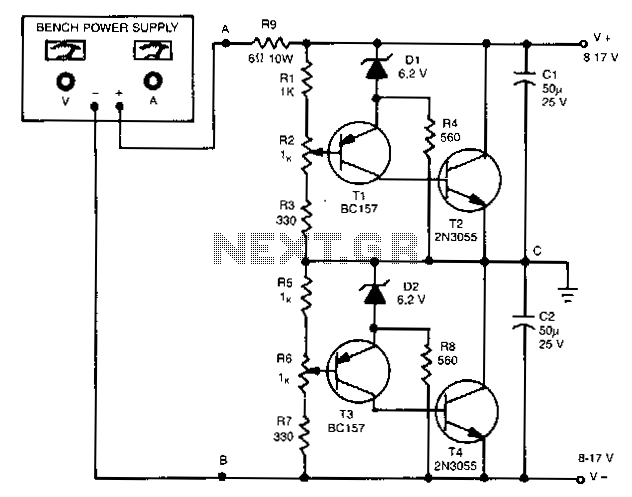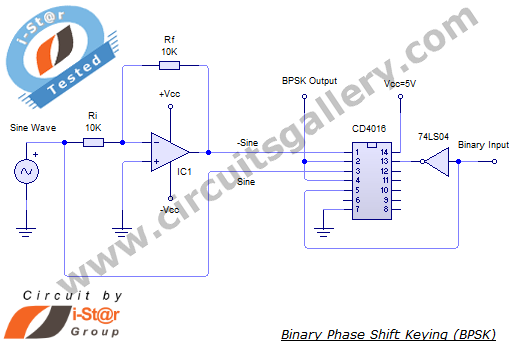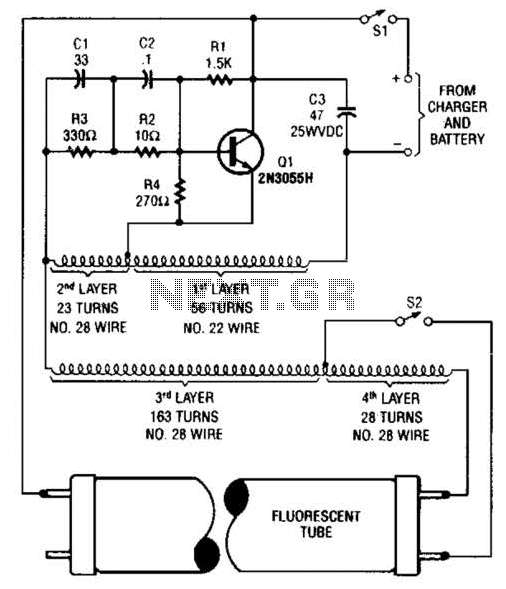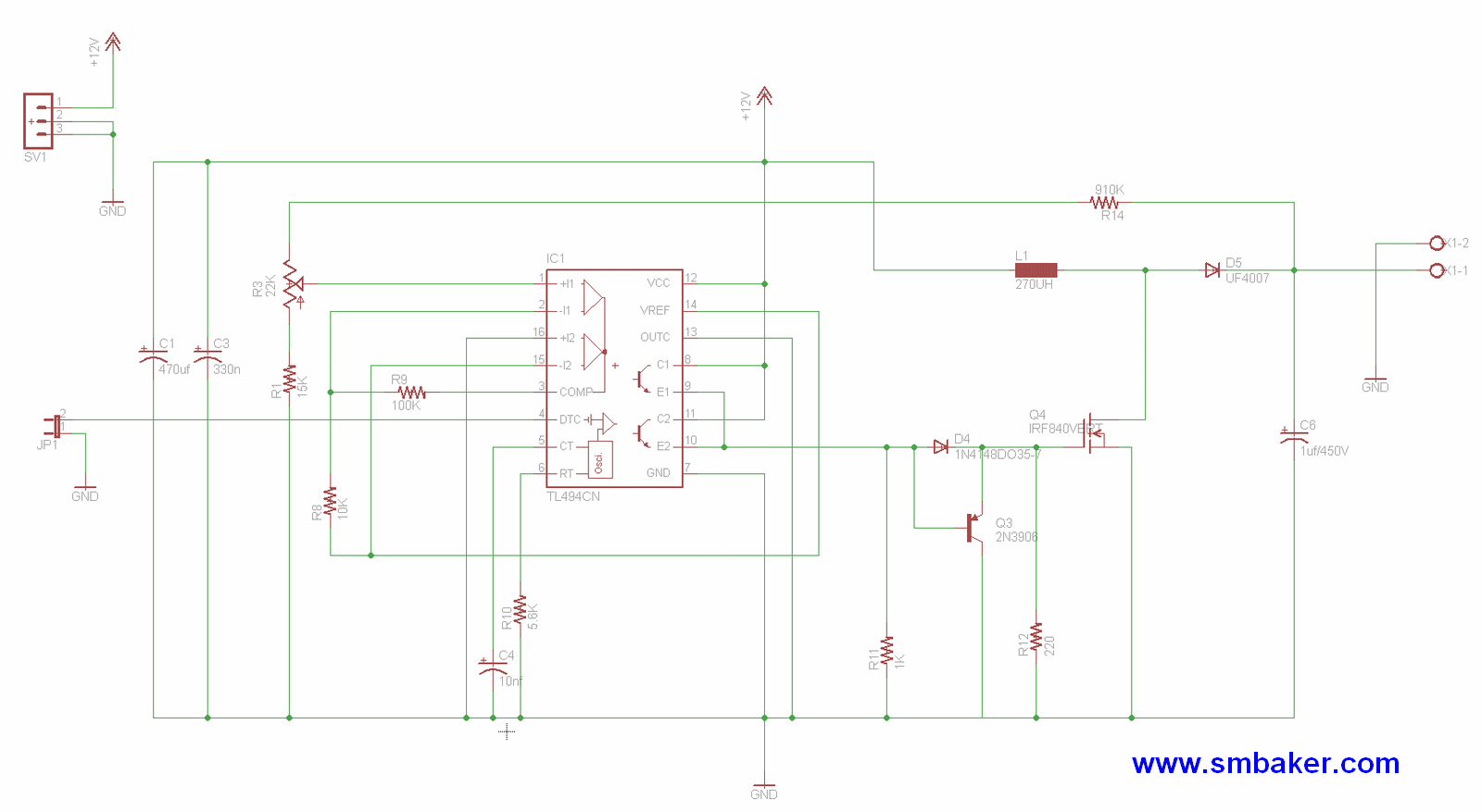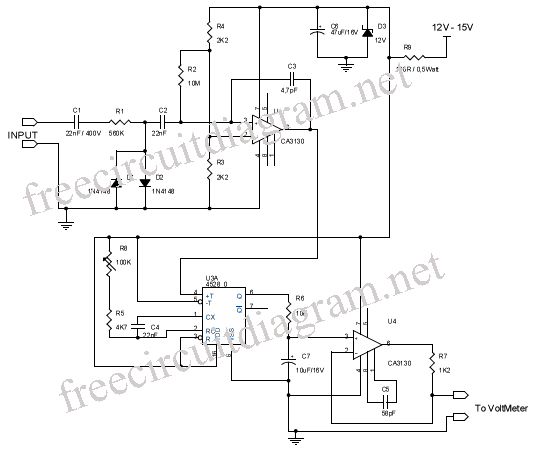
The single-phase sine wave frequency conversion stabilized voltage supply is designed and made
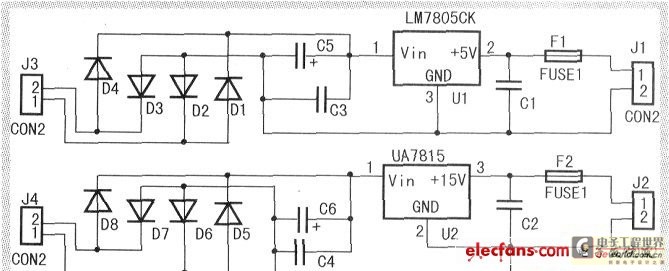
When the input voltage is between 198-242V, the average load current should be maintained at 0.5-1A, and the output voltage must remain at 15V with an error margin of less than 5%. The design and measurement of the stabilized voltage supply circuit, including electric current, frequency, and power of this frequency conversion, should have a measurement error of less than 5%. The circuit can utilize SPWM (Sine Pulse Width Modulation) for sine wave generation using a specialized chip. The output power can be calculated using the measured values of electric current and voltage. A single-phase rectifying circuit is employed, specifically a single-phase half-controlled rectifier, which allows for flexible control and adjustment of the output voltage within specific limits. However, challenges were encountered with the flip-flop circuit design. To simplify the design, an uncontrolled single-phase rectifying circuit was adopted, eliminating the need for a flip-flop with two triode thyristors. An RC over-voltage protection circuit (R9, C5) is connected in parallel to the secondary side of the voltage transformer to absorb and store energy. Components R10 and C6 serve as a capacitance-resistance protective circuit on the direct current side. The flip-flop of the rectifying circuit uses a unijunction transistor (BT33 Q3), which, despite its low phase shift range and power, meets design requirements at a low cost. The output from diodes VD1 and VD2 serves as the triggering signal for the triode thyristors VT1 and VT2. The output voltage can be adjusted using a potentiometer (RP0). The inverter circuit utilizes a center-tapped transformer to drive two power BJTs (V1, V2) alternately, supplying square wave AC voltage to the load. Diodes D1 and D2 provide a feedback channel for energy recovery. This circuit offers a simple control mechanism and mature component protection technology, making it cost-effective. The single-phase frequency conversion control device incorporates a 555 timer (U1) configured as a multivibrator and JK flip-flops (JP1) for signal processing. The circuit also includes an amplifying stage (V4, V5) to ensure high-frequency accuracy and flexibility, meeting design specifications. Additionally, a 5V and 15V DC voltage regulator circuit is included to provide bias voltage to the power amplifier tubes (V3, V4). A frequency measurement module, such as an LED frequency counter, is utilized for frequency display.
The circuit described employs a robust design approach to ensure stable output voltage and current under varying input conditions. The use of SPWM allows for efficient control of the output waveform, enhancing the performance of the voltage supply. The single-phase half-controlled rectifier configuration is advantageous for applications requiring adjustable output, while the integration of an uncontrolled rectifier simplifies the overall design by reducing component complexity. The RC over-voltage protection circuit effectively manages transient conditions, safeguarding sensitive components from voltage spikes.
The unijunction transistor flip-flop configuration is a cost-effective solution for generating control signals, ensuring reliable operation of the thyristors. The inverter design utilizing BJTs allows for efficient switching and minimal power loss, making it suitable for various applications. The feedback mechanism provided by diodes D1 and D2 enhances the energy efficiency of the system by recycling energy back into the circuit.
Furthermore, the inclusion of a 555 timer-based multivibrator and JK flip-flops ensures precise frequency control, which is crucial for applications requiring specific timing characteristics. The voltage regulator circuit effectively stabilizes the supply voltages necessary for the operation of the power amplifiers, contributing to the overall reliability of the system. The frequency measurement module serves as an essential tool for monitoring circuit performance, allowing for real-time adjustments and ensuring compliance with design specifications. This comprehensive approach to circuit design highlights the importance of component selection, configuration, and protection in achieving a reliable and efficient voltage supply system.When the input voltage is 198- 242V, the mean value of the load current is 0. 5- 1A, the mean value of the output voltage should keep in 15V, the error is smaller than 5% : 1 When the input voltage is 198- 242V, the mean value of the load current is 0. 5- 1A, the mean value of the output voltage should keep in 15V, the error is smaller than 1%; 2 Design and make and measure, reveal the circuit of the output voltage of stabilized voltage supply, electric current, frequency and power of this frequency conversion, the error in emasurement is smaller than 5%. 1 Can use, produce SPWM Puls e-width modulation of sine wave Corrugate special purpose chip; 2 The output power can be calculated through the measured value of the electric current, voltage.
Single-phase rectifying circuit: The following picture of choosing the rectifying circuit of single-phase half control is shown. This circuit control is flexible, the adjustable within the specific limits of the magnitude of output voltage, so become the selected scheme.
But we find while finishing this part of a circuit. The flip flop of this circuit has certain difficulty. Under not making the situation that the rigid index stipulates to the rectifier while designing the index, we can well adopt the single-phase uncontrolled rectifying circuit, thus reduce the design of the flip flop of two triode thyristors. Originally design RC over voltage killer circuit R9, C5 adopted to connect in parallel in the second order of the voltage transformer Component side, In order to absorb the released energy of unshakable in one`s determination magnetic field of the voltage transformer.
And change and store it for electric field energy of the capacitor, series resistance for consume some energy and inhibit the intersection of RC and vibration that loop might produce from in energy transduction. R10, C6 are regarded as the capacitance-resistance protective circuit of straight flow side. The flip flop of the rectifying circuit is chosen by the unijunction transistor BT33 Q3 The constituent flip flop, the following picture, shows, though phase shift range and power are not high, but low cost, satisfiable designing requirement, so become the selected scheme.
The trigger impulse that VD1, VD2 output, as the triggering signal of VT1 and VT2 triode thyristor. Change and touch off the angular magnitude by regulating the potentiometer RP0, thus change the magnitude of the direct-current volts of the output. Reverse the stabilizator and choose the right side circuit of the following picture of inverter circuit with central tapped transformer to be shown.
Drive two power BJT V1, V2 alternatively, Couple and for load to add to the square wave alternating current voltage by the voltage transformer. Two diodes D1, D2 Function last energy too feedback channel. The advantage of this circuit is that controlling circuit is simple, the component protects technology ripely.
It is because its price is cheap to reverse the on-off element and choose BJT tube of the power, it is flexible to control. The single-phase frequency conversion control device chooses by 555 U1 Make up multivibrator and JK JPl The flip-flop constituent facelift and left side circuit of the following picture of amplifying circuit of V4, V5 constituent final-stage are shown.
The frequency accuracy of this circuit control is high, flexible and convenient, can finish the designing requirement index. By 555 U1 And JK JP1 The flip-flop is the active device, so the following picture of still needing to produce 5V and 15V direct-flow voltage regulator circuit in addition is shown, bias direct-current volts source as it, 15V stabilized voltage supply is still two power amplifier tubes V3, V4 Offer the bias voltage.
According to the designing requirement, the measurement of the frequency adopts the display module of single frequency. Need to make a LED frequency counter, is used for revealing t 🔗 External reference
The circuit described employs a robust design approach to ensure stable output voltage and current under varying input conditions. The use of SPWM allows for efficient control of the output waveform, enhancing the performance of the voltage supply. The single-phase half-controlled rectifier configuration is advantageous for applications requiring adjustable output, while the integration of an uncontrolled rectifier simplifies the overall design by reducing component complexity. The RC over-voltage protection circuit effectively manages transient conditions, safeguarding sensitive components from voltage spikes.
The unijunction transistor flip-flop configuration is a cost-effective solution for generating control signals, ensuring reliable operation of the thyristors. The inverter design utilizing BJTs allows for efficient switching and minimal power loss, making it suitable for various applications. The feedback mechanism provided by diodes D1 and D2 enhances the energy efficiency of the system by recycling energy back into the circuit.
Furthermore, the inclusion of a 555 timer-based multivibrator and JK flip-flops ensures precise frequency control, which is crucial for applications requiring specific timing characteristics. The voltage regulator circuit effectively stabilizes the supply voltages necessary for the operation of the power amplifiers, contributing to the overall reliability of the system. The frequency measurement module serves as an essential tool for monitoring circuit performance, allowing for real-time adjustments and ensuring compliance with design specifications. This comprehensive approach to circuit design highlights the importance of component selection, configuration, and protection in achieving a reliable and efficient voltage supply system.When the input voltage is 198- 242V, the mean value of the load current is 0. 5- 1A, the mean value of the output voltage should keep in 15V, the error is smaller than 5% : 1 When the input voltage is 198- 242V, the mean value of the load current is 0. 5- 1A, the mean value of the output voltage should keep in 15V, the error is smaller than 1%; 2 Design and make and measure, reveal the circuit of the output voltage of stabilized voltage supply, electric current, frequency and power of this frequency conversion, the error in emasurement is smaller than 5%. 1 Can use, produce SPWM Puls e-width modulation of sine wave Corrugate special purpose chip; 2 The output power can be calculated through the measured value of the electric current, voltage.
Single-phase rectifying circuit: The following picture of choosing the rectifying circuit of single-phase half control is shown. This circuit control is flexible, the adjustable within the specific limits of the magnitude of output voltage, so become the selected scheme.
But we find while finishing this part of a circuit. The flip flop of this circuit has certain difficulty. Under not making the situation that the rigid index stipulates to the rectifier while designing the index, we can well adopt the single-phase uncontrolled rectifying circuit, thus reduce the design of the flip flop of two triode thyristors. Originally design RC over voltage killer circuit R9, C5 adopted to connect in parallel in the second order of the voltage transformer Component side, In order to absorb the released energy of unshakable in one`s determination magnetic field of the voltage transformer.
And change and store it for electric field energy of the capacitor, series resistance for consume some energy and inhibit the intersection of RC and vibration that loop might produce from in energy transduction. R10, C6 are regarded as the capacitance-resistance protective circuit of straight flow side. The flip flop of the rectifying circuit is chosen by the unijunction transistor BT33 Q3 The constituent flip flop, the following picture, shows, though phase shift range and power are not high, but low cost, satisfiable designing requirement, so become the selected scheme.
The trigger impulse that VD1, VD2 output, as the triggering signal of VT1 and VT2 triode thyristor. Change and touch off the angular magnitude by regulating the potentiometer RP0, thus change the magnitude of the direct-current volts of the output. Reverse the stabilizator and choose the right side circuit of the following picture of inverter circuit with central tapped transformer to be shown.
Drive two power BJT V1, V2 alternatively, Couple and for load to add to the square wave alternating current voltage by the voltage transformer. Two diodes D1, D2 Function last energy too feedback channel. The advantage of this circuit is that controlling circuit is simple, the component protects technology ripely.
It is because its price is cheap to reverse the on-off element and choose BJT tube of the power, it is flexible to control. The single-phase frequency conversion control device chooses by 555 U1 Make up multivibrator and JK JPl The flip-flop constituent facelift and left side circuit of the following picture of amplifying circuit of V4, V5 constituent final-stage are shown.
The frequency accuracy of this circuit control is high, flexible and convenient, can finish the designing requirement index. By 555 U1 And JK JP1 The flip-flop is the active device, so the following picture of still needing to produce 5V and 15V direct-flow voltage regulator circuit in addition is shown, bias direct-current volts source as it, 15V stabilized voltage supply is still two power amplifier tubes V3, V4 Offer the bias voltage.
According to the designing requirement, the measurement of the frequency adopts the display module of single frequency. Need to make a LED frequency counter, is used for revealing t 🔗 External reference
Warning: include(partials/cookie-banner.php): Failed to open stream: Permission denied in /var/www/html/nextgr/view-circuit.php on line 713
Warning: include(): Failed opening 'partials/cookie-banner.php' for inclusion (include_path='.:/usr/share/php') in /var/www/html/nextgr/view-circuit.php on line 713
